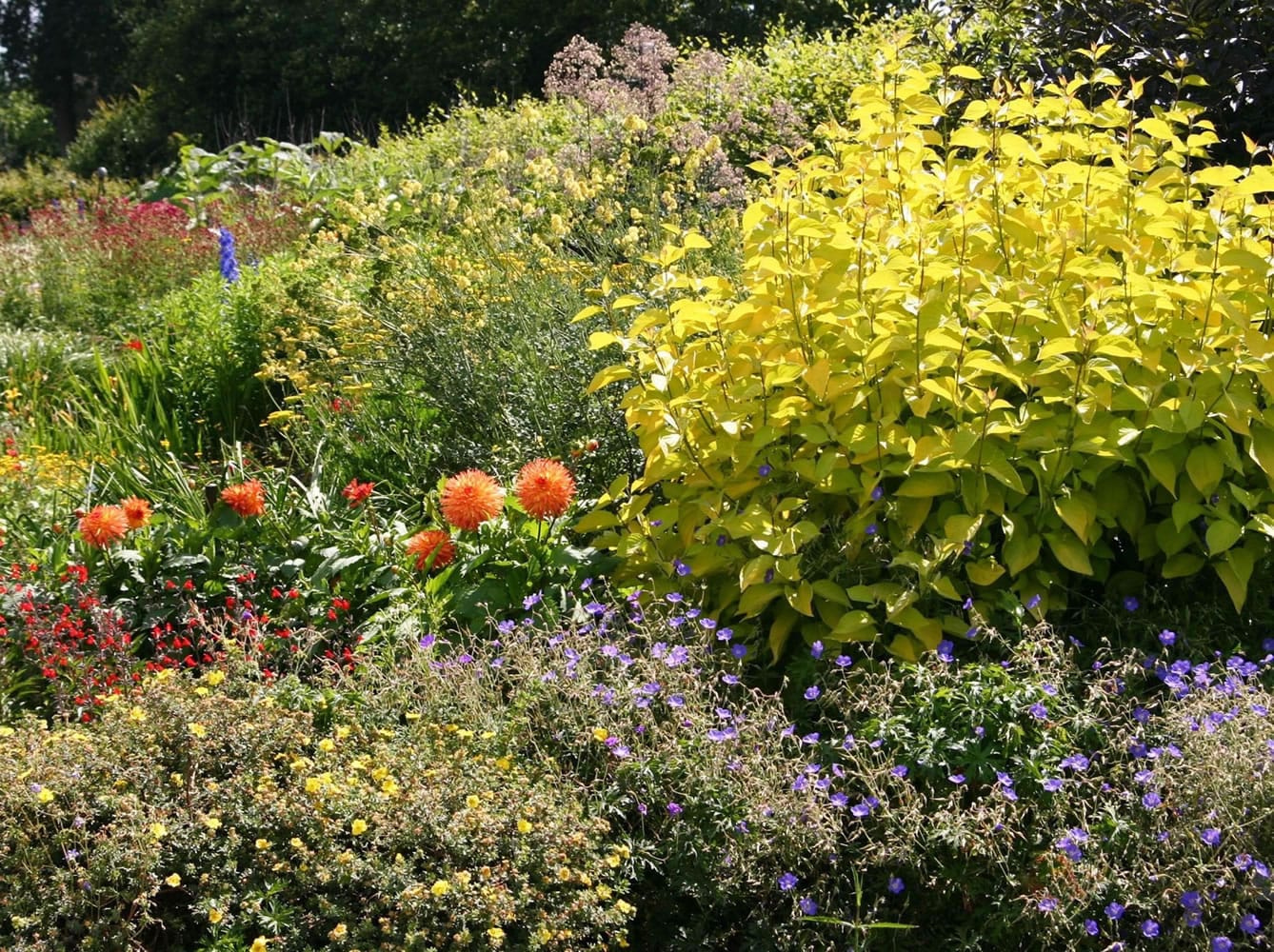For many gardeners the days of late summer sunshine draw us out in the garden more than any other time of year. There is always work to do and deadheading is one element of a productive and tidy garden. I have to admit that my efforts to control abundant plant growth and keep everything within bounds can be downright exasperating. Fortunately, summer days are long and occasionally warm, and the results of my efforts make the time well spent.
Many gardening friends have asked me to repeat my thoughts on deadheading, pinching out, pruning and cutting back. These seem like such simple terms until you come face to face with a plant in the garden.
Simply put, deadheading is the act of removing spent flowers. By deadheading, you prevent the plant from going to seed and encourage the plant to send out new flowers. It also improves the appearance of most plants, particularly roses and herbaceous perennials.
The classic method of deadheading chrysanthemums is to literally pinch back or pinch out the topmost growth. If you pinch the tips out until mid-summer, the plant will be fuller and more compact when it is finally allowed to produce flowers. This prevents each stem from getting tall and leggy, falling over and dragging its petals in the dirt when autumn rains arrive. It also delays the bloom period, extending flower production well into the fall season.
Pinching is a method of deadheading. It involves a pinch with the thumb and forefinger. Pinching works well for plants with thin, crisp stems. Take hold of the stem right below the flower bud and pinch with your thumbnail pressed against the fleshy end of the finger. It breaks right off. Taking off the terminal end of a stem forces the plant to send out two shoots where there was one. Later, pinch those out and they each send out two shoots. This method works for coleus, asters and other soft stemmed plants.
Since I often learn my best lessons from the mistakes I make in the garden, I give pinching credit for teaching me other subtleties of deadheading. On the occasion that I tried to pinch off a spent rose blossom, because I was too lazy to go hunting for a pair of pruners, I learned that pinching does not work on roses. The stems have too much inner strength for mere fingers. You end up ripping the internal membrane of the stem.
If you try (and I venture to guess that most of us have tried this at least once), you will find that you can pinch, bend, twist and yank all you want. The rose does not break off between your fingers no matter how determined you are. It would rather let you pull the entire plant out by the roots than go in such an undignified manner. Roses need to be pruned with a pair of sharp pruners. Fussier people prefer you call the pruners “secateurs” but that is another story.
Get the picture
Pruning includes the process of cutting back woody plants such as shrubs and small trees.
By definition, it is not considered pruning when you cut down an herbaceous perennial. That is called cutting back and is usually done in late fall or early spring.
Pruning is best tackled one type of plant at a time, one job at a time. My advice is to buy the best book available and look up the specific plant you want to prune.
Every basic garden book will show a picture of the correct way to prune roses and other woody plants. Take five minutes and have a look. You can read a hundred times how to prune and still not quite see it in your mind. Someone can tell you repeatedly but the first time you are alone you will stand there mystified by the process. In this instance, there is no doubt that a picture is worth a thousand words.
Even with the late arrival of summer this year, it has been one of the best years yet for many of the flowering perennials in my garden. Therefore, it has been a nonstop job just keeping up with the deadheading.
I call it work worth the effort.
One of my favorite gardening friends likes to say that Northwest gardeners even moan and groan optimistically, exclaiming that it feels like rain is coming at the end of a lovely, hot summer day. As for me, I think it would be grand if too much sunshine was our one reason to complain.
Robb Rosser is a WSU-certified master gardener. Reach him at Write2Robb@aol.com.



